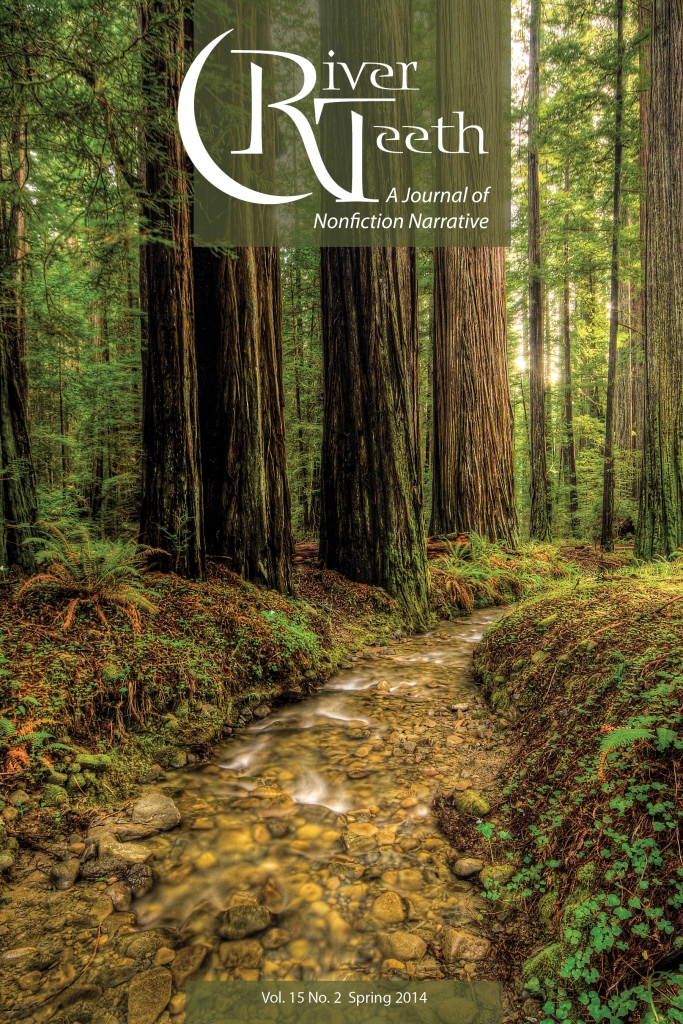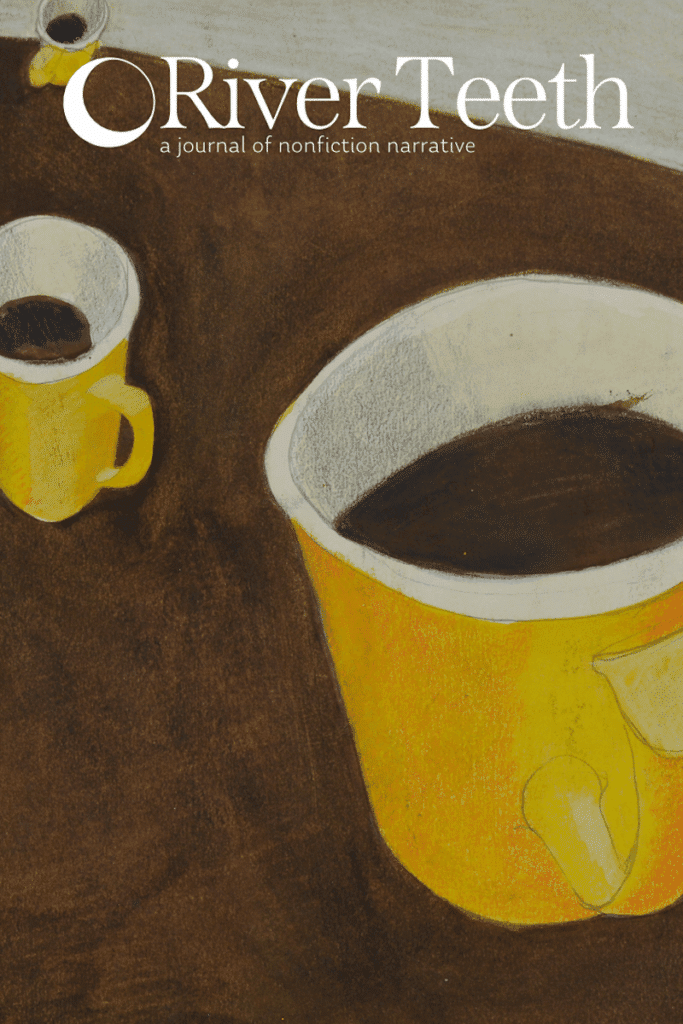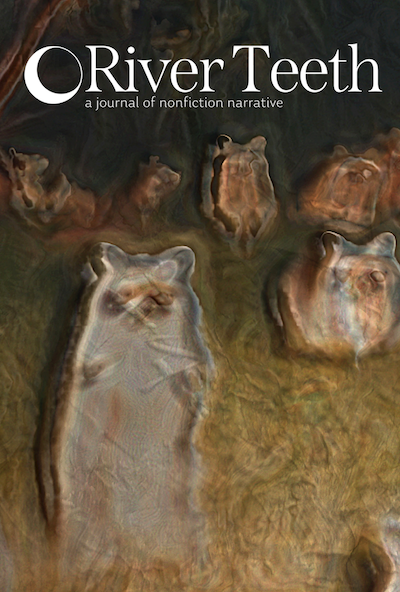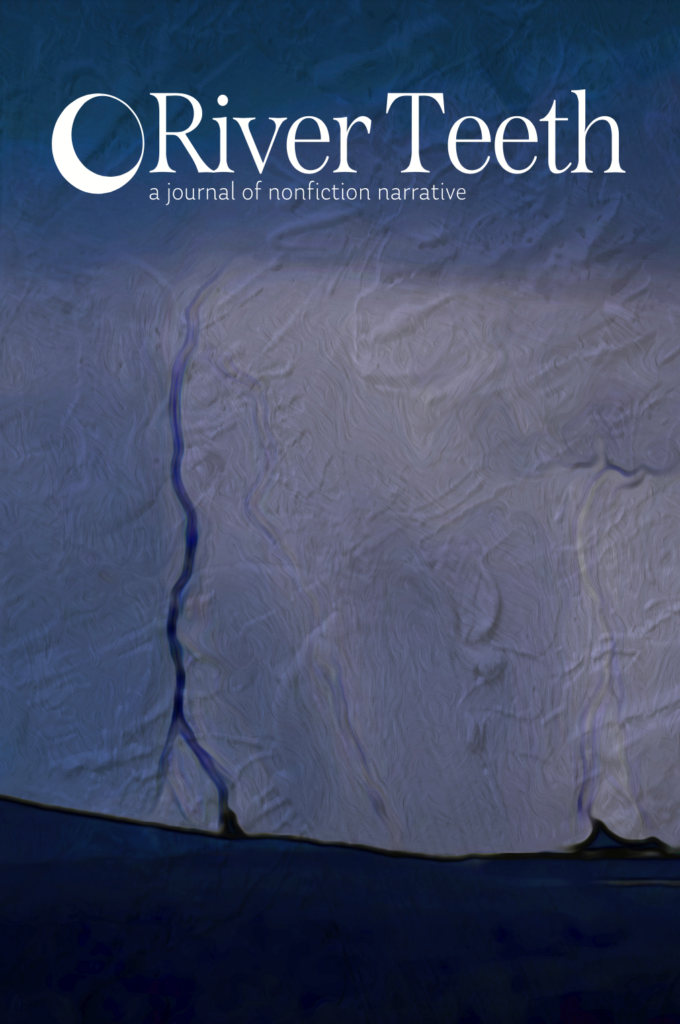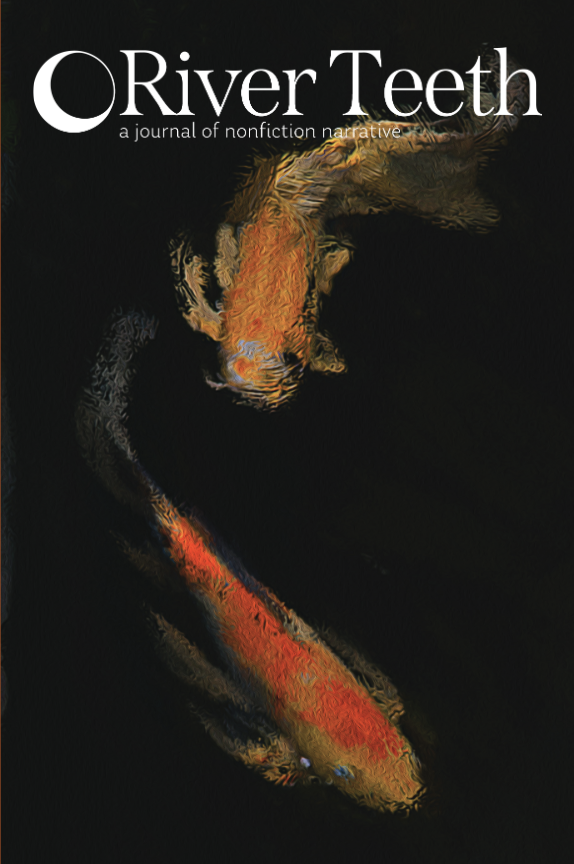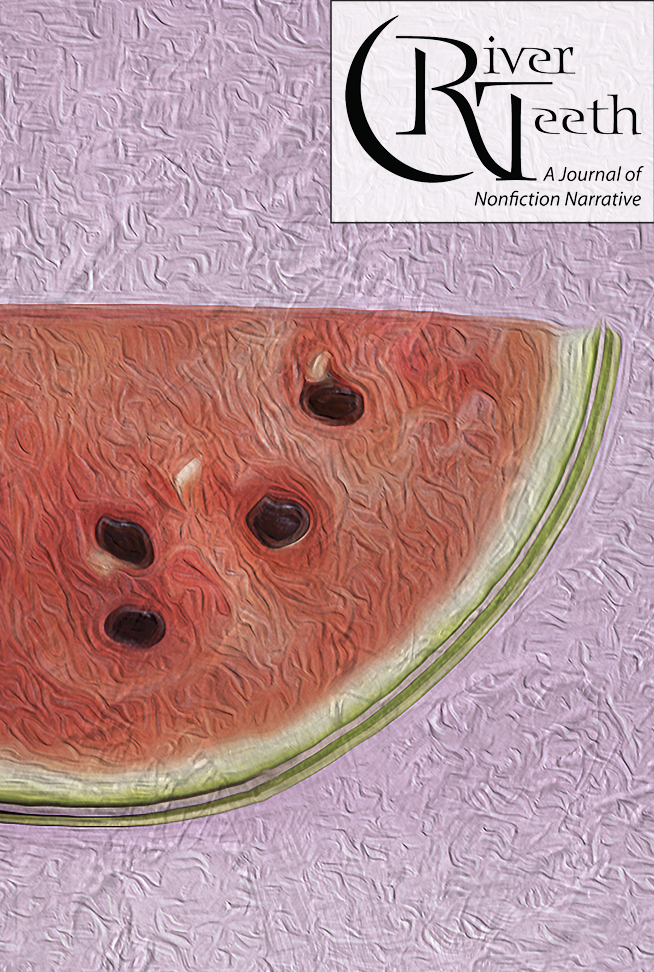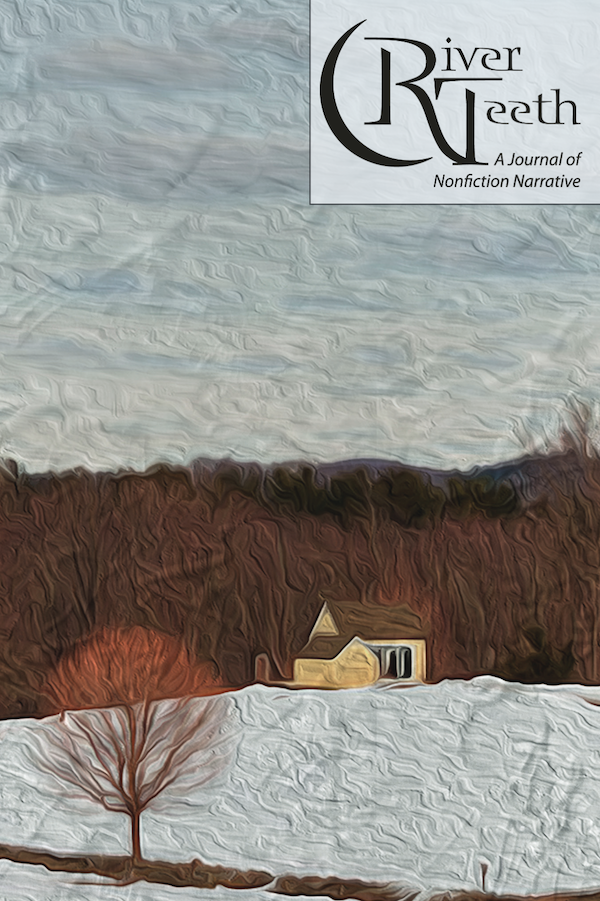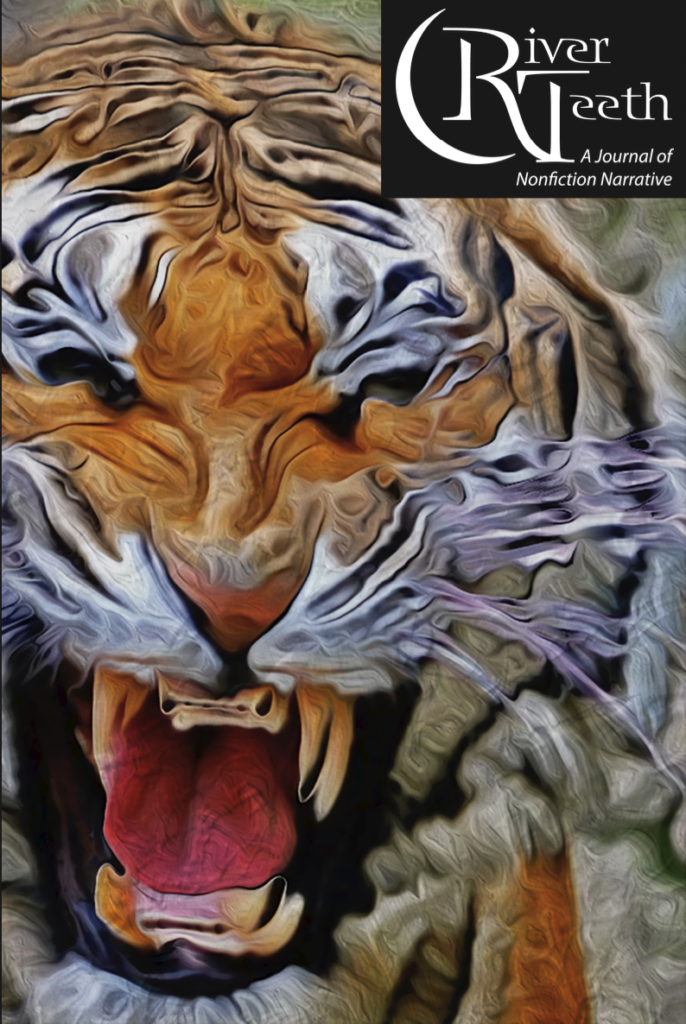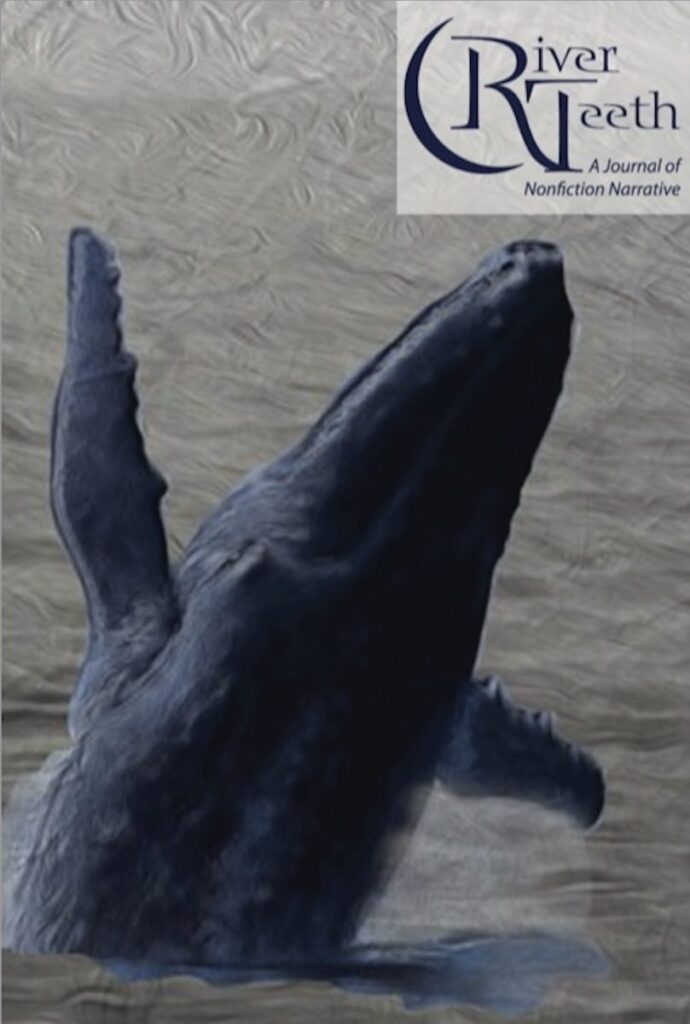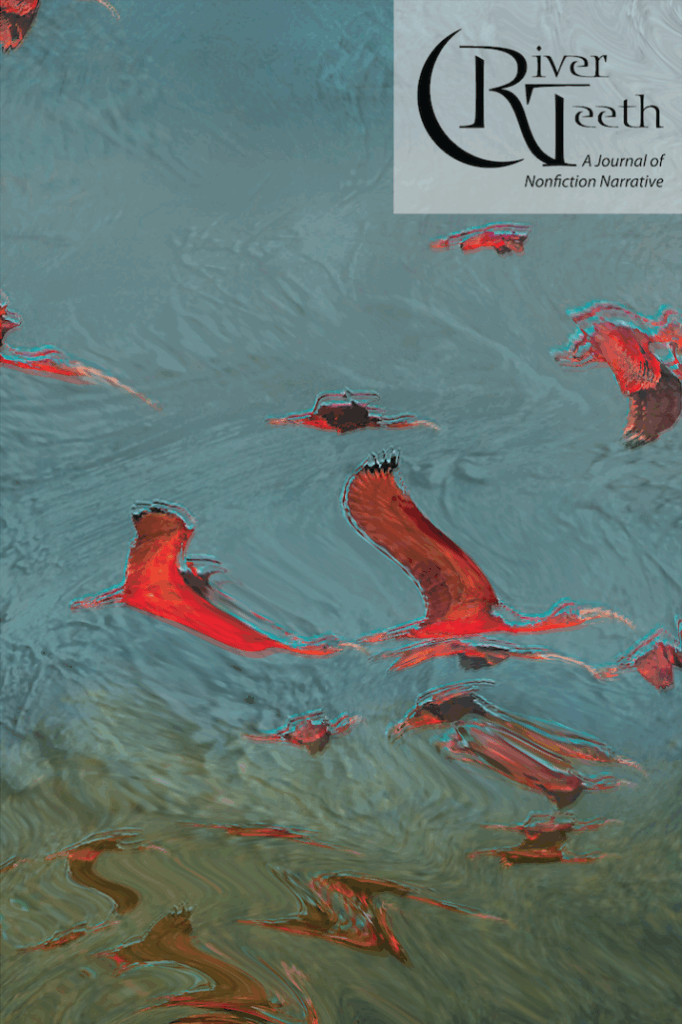By Daniel W. Lehman
Fifteen years into this journey, an important thing readers should know about River Teeth is that its two editors once worked at magazines and newspapers where we shaped content and nurtured writers. Hence our love for factual writing that soars in interesting ways. Beyond that, we love clustering great essays and literary reporting into the soul and rhythm of each issue. Though River Teeth is housed at a university and has been adopted as a reading text by nonfiction professors across the country, what we do here is much more than an academic exercise. We prowl for edgy, compelling nonfiction, crafting volumes that regularly make our readers take an extra breath and blink.
It’s a high standard and difficult to define. Of course, sometimes we miss, but we do know what works when we see it and, thankfully, we hit the mark most of the time. Perhaps that’s why, in the past year, we’ve had an essay recognized with a Pushcart, two pieces anthologized in Best American Essays, and five BAE notables. If you are counting (and we confess that we are), that’s a record that simply no one else is matching—not even the long-running, deeply loved, commercial literary magazines that can pay writers much more and have been a traditional home for great American writing.
So how do we do it?
First of all, the two of us and the readers you see listed in the mast-head peruse every one of the more than a thousand unsolicited manuscripts that come our way each year—even though we know we can accept only about ten or twelve of them. We root for each and every submission, hoping to find not only the perfect piece by a great writer whom we already love, but, as has happened, the fledgling writer whose first published piece will appear in River Teeth and will snare a Pushcart for the writer and for us.
Wait, you say, only ten or twelve unsolicited entries make the final cut? But don’t we regularly publish at least twice that many nonfiction pieces each year? Where do the rest come from? Something here doesn’t add up.
That’s where we become magazine editors engaged in a never-ending search for whatever will make any issue the best it can be. Between us and our managing editor, we travel to conferences and workshops across the country. Frankly, some of the best of them are close to home: our own River Teeth Nonfiction Conference and the two-week annual intensives at our Ashland MFA. Top writers read from their work on these occasions, as they do at AWP, Nonfiction Now, and other places we hang out. If we hear something that is great, we go for it. Right then. We don’t suffer a turn-down easily. Something about our enthusiasm for a piece, and about our vision for the journal and what we do, has convinced writers who otherwise don’t owe us the time of day to take a shot with River Teeth. It’s paid off for us, and they tell us it has paid off for them. A River Teeth publication means something important, as witness the contracts our writers sign and our results when winners are selected.
Beyond tracking down writers in person, all of us here prowl scores of websites like the Nieman Storyboard or The Morning News in search of great writing and writers who may be a fit for us. While we won’t reprint essays or articles from major outlets, we will pick up a piece from a regional newspaper or magazine or an online zine that will help us shape an issue and introduce our readers to a great new voice who deserves to be heard. And, as we grow our base of subscribers and online library-access royalties, we now can commission new pieces from writers we love. The essay from our reigning Pushcart honoree Andre Dubus III—“Writing and Publishing a Memoir: What in the Hell Have I Done?”—was a commissioned piece. It was more than worth it for him and for us; we have many such new ideas percolating, and we welcome your suggestions.
At heart we always ask two questions: Is this the sort of piece I would want to call the other editor in the middle of the night to say we have to have? And would we die if we saw this piece in someone else’s journal and knew we could have had it for ourselves? Those are the criteria, nothing else really. As we wrote a few issues ago, we will publish the work of friends and acquaintances (even ourselves) if it meets those standards. Only then. That’s all. That our two Best American essays come from writers with close ties makes our case. Both were among the best dozen or so essays in this or any other year; it would have killed us to see them win those prizes for someone else. And we confessed that fact in writing before the prizes were won.
We know all this sounds more than a little intuitive, even presumptuous, and quite a bit less than arm’s length. That’s the nature of love, we guess.
Still, we probably owe you some articulated standard; heck, we owe it to ourselves. The best we’ve heard recently comes from Cheryl Strayed in her introduction to Best American Essays 2013. “Behind every good essay there’s an author with a savage desire to know more about what is already known,” she says. She reminds us all that great nonfiction writing is part philosophy, confession, recollection, reimagination, clarity, conjecture. Ultimately, she says, “the essay’s engine is curiosity; its territory is the open road.”
As for us, we’re happy on that open road; we’re glad you’re with us for the ride.

